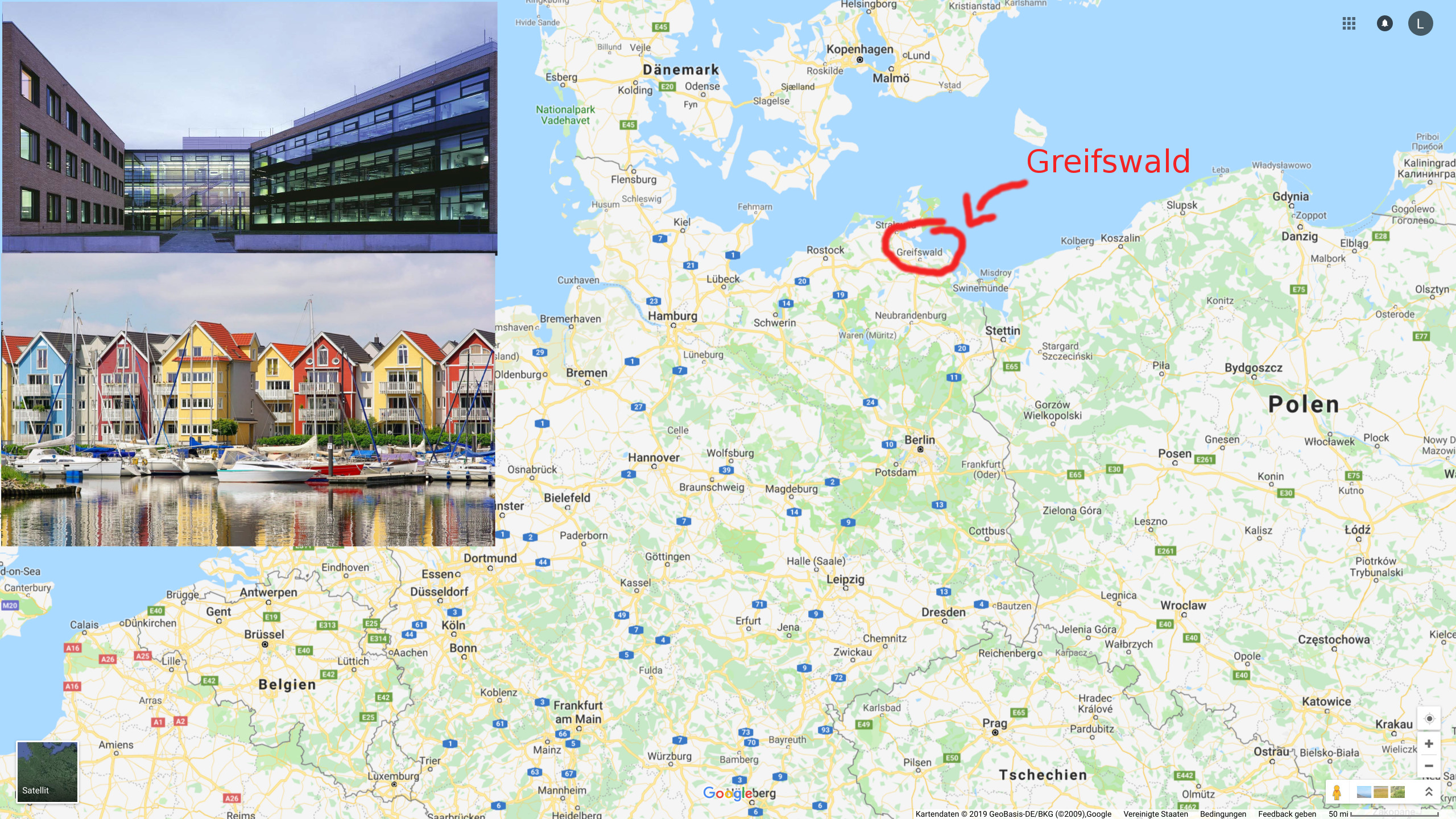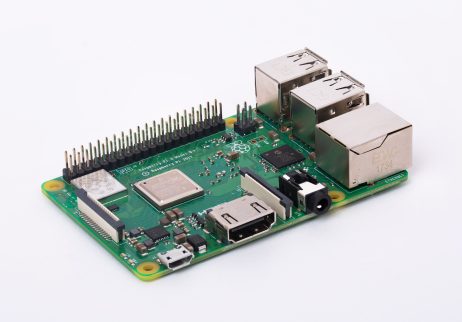LARA and SiLA2.0/AnIML
– an integrated open source laboratory automation suite, also for sample management ?
dr. mark doerr
institute for biochemistry, university greifswald
2019.03.11

Any element with the class="notes" will not be displayed. This can
be used for speaker notes. In fact, the impressConsole plugin will
show it in the speaker console!
Press ctrl-C to activate the console

* lara intro
the greifswald protein screening platform LARA
* lara intro
scientific data - structure
* In the very early days of personal computing, I was wondering, why the computer was not used
scientific work and data
how do we organise / structure scientific experiments that they are reproducible, even in 100 years ?
how do we store the scientific data, even to be read in 100 years ?
how do we organise the scientific data, that new knowledge can re-interpret / re-evaluate the old data ? (coping with evolution in science)
* In the very early days of personal computing, I was wondering, why the computer was not used
in every scientist should have a laptop to document his experiments
share data , faster evaluation, search, combining results, re-interpret when more knowledge
First devices every single devices has its very own software
HPLC, NMR own data formats
only propieatary sotware to open the formats
later robotics
very limited view only control
so I decided to create my onw software with the massive help and back of the open source community
everything is out there....
holistic approach of the LARA suite
- planning of experiments
- storing all required data for the planning, like literature, substances, material, devices, experimentalists ...
- generating the processes
- execution of the processes, communication with the lab devices
- collection of the data (very structured, well prepared to learn from it)
- evaluation and visualisation of the data (also DoE and machine learning)
- reporting / publishing / exchange between labs
* In the very early days of personal computing, I was wondering, why the computer was not used
LARA suite - architecture
* In the very early days of personal computing, I was wondering, why the computer was not used
LARA suite - main components
-
robot project planning
-
robot process design / code generation
-
process control / scheduling (planned)
-
data collection
-
data evalution and visualisation
-
people / experimentalists
-
compound and device database
* feature
LARA suite - componens for sample/compound management
-
compound and device database
- Logarithm of partition coefficient (LogP)
- Molecular weight (MW)
- Hydrogen bond donors / acceptors (HBD / HBA)
- Topological polar surface area (TPSA), Rotatable bonds (Rot), etc.
-
compound and device inventory / ordering system
- supplier, price,
-
container database
-
people / experimentalists
* feature
LARA suite - techniques
- all open source based
- languages: python3, R and JavaScript
- very compact code (< 10 MB), usage of standard library, minimum dependencies
- gRPC as universal wire format (SiLA2 communication) and web front-end / backend (no REST !!)
- AnIML as long term storage and data exchange format (planned)
- one language paradigm for all
- python-django web framework and database ORM
- flexible relational database schema, fitting many lab workflows
LARA - open source code repositories
we need you as a open source developer / tester !
what is  ?
?
sila-standard.org
- laboratory automation communication standard
- standardised data transfer
- standardised data storage (AnIML)
* feature
who is  ?
?
- non-profit standardisation organisation (sila-standard.org)
- headquarter located in Switzerland
- featured at SLAS2019 !
- supported by many lab device, pharma companies, academic institutions, e.g.
- TU Berlin
- TU Dresden
- Forschungszentrum Jülich
- Fraunhofer IPA Stuttgart/Mannheim
- University Greifswald
- wega informatic AG
- unitelabs
- EQUIcon GmbH
- BSSN Software GmbH
- Novartis
- Roche
- idorsia
- TECAN
- Madisoft
* feature
 2 lab automation communication standard
2 lab automation communication standard
* SiLA 2
 2 - applications
2 - applications
*
 2 - server / client architecture
2 - server / client architecture
*
 2 - main concepts
2 - main concepts
- Feature based Micro Service Architecture
- SiLA data types
- open source
- multi language support (python, JAVA, C#, C++)
- discovery based on zeroConfig (bonjour)
* feature
 2 - technical background
2 - technical background
- g Remote Procedure Calls (gRPC) as base wire format
- large gRPC community, supported by Google as their future webservice protocol
- very clear, generic interface description language "ProtoBuf"
- type safe - successor technology of REST
- «binary encoded JSON» as payload
- HTTP/2 based transport protocol
* gRPC “wire format” - and - for simplicity - the gRPC libraries as a base
* restricted use of HTTP Methods and Status Codes
* Based on HTTP2
sila_python: a fast entry to  2
2
setup
- download repository
- run installer
- go to examples directory
- run Hello SiLA 2 Server
- run Hello_sila2 client
git clone
python3 sila2installer
cd sila_python/examples/HelloWorld
python3 python HelloSiLA2_server.py
python3 python HelloSiLA2_testclient.py
*
sila_python: the code generator workflow
- create Features (currently in SiLA XML Feature Definintion language)
- put them all in one directory with a server description file
- run the sila2codegenerator
- this will result in
- all protobuf files, describing the interface
- a ready-running server and testclient
- server / client stub classes for subclassing
- a simulation implementation
- a real hardware implementation template
- run my_new_labdevice_server / client
sila2codegenerator -d my_new_labdevice_project
* gRPC “wire format” - and - for simplicity - the gRPC libraries as a base
* restricted use of HTTP Methods and Status Codes
* Based on HTTP2
 2 - repositories
2 - repositories
 Raspberry Pi repository: sila_python/raspberry_pi
Raspberry Pi repository: sila_python/raspberry_pi
image source: https://www.raspberrypi.org
what is AnIML ?
www.animl.org
- Analytical Information Markup Language (AnIML)
- ASTM XML standard for analytical chemistry data (ASTM subcommittee E13.15.)
- A highly flexible core schema that defines XML tagging for any kind of analytical information
- A set of technique definition documents. These XML files, one per analytical technique, apply tight constraints to the flexible core and in turn are defined by the Technique Schema
source: www.animl.org
* feature
labPy - a python GUI library
for interacting with lab devices
labPy features
- simple to use graphical user interface elements (QT5 based)
- hardware interfaces (serial, USB)
- reusable code
- flexible use cases
- much cheaper and more modern than NI LabView (R)
Software that makes the usage of everything less complex
labPy - open source code repositories
simple installation via pip:
summary
- the power of open source ('matters') - construction of very powerful tools with standard solutions
- fast, script based / automatized data processing with LARA, using one single language paradigm to access all data
- SiLA2 based communication - customers, please ask vendors for SiLA 2 compliance !
- if you need a GUI, use labPy
Software that makes the usage of everything less complex
acknowledgements
robot hard- and software
- Peter Neubauer with his group (TU Berlin)
- Sebastian Hans (TU Berlin)
- Shaon Debnath (TU Berlin)
- Stefan Born (TU Berlin)
- Johannes Kabisch with his group and associates (TU Darmstadt)
SiLA team
- Daniel Juchli (wega-it.com)
- Maximilian Schulz (unitelabs.ch)
- Stefan Koch (equicon.de)
- Oliver Peter (idorsia.com)
general
-
 Uwe Bornscheuer (University Greifswald)
Uwe Bornscheuer (University Greifswald)
THANX !